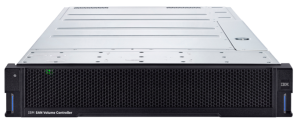Do you remember when you first began to think about data? Long before we learn about the concept, from the moment we are born, we are absorbing, consuming, sorting and organizing data.
Nowadays, not all enterprises use data in a strategic way. Only recently have business leaders had access to much of the important data affecting their enterprises, and the tools to understand it at a granular level.
The growing importance of the CDO
The Chief Data Officer (CDO) role is relatively new to the c-suite. Its evolution into a board-level position is telling, as businesses worldwide come to understand just how much they can benefit from being a data-first organization. Put simply, the goal of the CDO is to help the organization make decisions based on data. But their reach doesn’t stop at the boardroom. Their strategies affect the entire company, making the CDO a powerful agent of change.
As a CDO weaves data decisions into daily workflows, their success is measured along three dimensions:
◉ Growth of the top line
◉ Expansion of the bottom line
◉ Reduction of risk
As CDO at IBM, an essential part is being an evangelist for data literacy and data democratization in service of those dimensions above. Building a data-first culture involves talking a lot about it. So, in a recent episode of the podcast Sunny Side Up, I spoke with Asher Mathew and explained how the most effective way to see success is by transforming your company’s culture to a data-first philosophy.
You can listen to that conversation right here.
So, how does an organization do this in a holistic and lasting way? By building a data-first culture.
Building a data-first culture
Every organization has mountains of data that, when properly analyzed, provide a risk-averse growth strategy unique to the needs of their business or industry. An effective CDO must pay attention to that data, understand how to apply it to advance the company’s business goals, and be prepared to articulate their case at the board level.
Changing an organization can be daunting, which is why it’s crucial to develop a data strategy that aligns with your business strategy. For example, when I joined IBM, I knew their business strategy focused on selling Hybrid Cloud and AI. We thoroughly understood what that journey meant for a consumer, but not so much in terms of an enterprise. In time we recognized we needed to become an AI enterprise, to be in a position to help organizations do the same and infuse AI into their business processes. Therefore, our data strategy became about transforming IBM into an AI enterprise and then showcasing our story to our clients. Of course, you can’t do that successfully without a data-first culture.
To usher in this change, we created a variety of specialized business units to work toward infusing AI throughout the company.
◉ The data standardization and governance unit ensures that all the data we use is fit for purpose.
◉ The adoption unit is fully empowered to work directly with various departments and implement an AI transformation. We recognized that AI needed to be incorporated into our company-wide workflows so the participation of this unit is critical to ensuring that the company’s data and AI platform has full adoption across the company.
◉ The data officer council is made up of members from organizations throughout the company who help validate the direction set by the Chief Data Office and remain responsive to business needs.
Many of IBMs clients look like us: they are complex organizations filled with potential that’s difficult to unlock. Since it’s a challenge to change such complex ecosystems, it is important that IBM be a definitive showcase for the kinds of transformation we can offer to our clients and partners.
The successes of a data-first culture
Let me share some examples of our success. In 2016, we laid down our data foundation to deliver trusted, enterprise-wide datasets and standards. Once we deployed our AI solution along those vectors, we saw a boost in operational efficiency: an over 70% improvement to the average business process cycle time, which is the time a process takes to complete from start to finish.
We had a massive effort around risk mitigation from 2016-2018 to respond to the introduction of GDPR in the EU. More than that, however, it was an opportunity to innovate and develop new services and governance frameworks to facilitate better compliance efforts at scale.
With the creation of our AI Accelerator Team in 2018, we started to focus on revenue growth. The AI Accelerator team takes our internal data and AI transformation and showcases it to our clients to help them drive similar changes within their organizations.
Data literacy is at the core of each unit’s success. This should be the primary goal of any CDO change agent. Data is crucial to everybody’s lives, not just to people in organizations like ours. The public at large needs to understand what can be done with data. The cultural change element of the CDO role is concerned with influencing how data is used from within and being the example, that others can follow. If the CDO does not focus on this, how can they expect anyone else to care?
Above all, we want to empower our people to be data-driven; move at the speed of their insights, to observe the data, act on it and not ask for permission.
You must be prepared to inspire and support your teams to thrive, and more realistically, to fail fast, but learn through that failure. The CDO is in a position to understand all elements of the change, how to navigate challenges, how to learn through failure and how these components transform the culture of the enterprise. Effective communication is critical at the C-suite level, and the data you’re using becomes an integral part of the business strategy.
If you found these ideas intriguing, I invite you to join me in a deeper discussion about exploring data and technology with leading CDOs, CAOs, and CTOs at the upcoming IBM Chief Data Technology Summit Series.
Source: ibm.com















